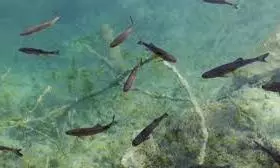
Ancient Maya fish-trapping network found in Belize, sustained early civilizations
text_fieldsResearchers have uncovered a sophisticated fish-trapping system in Belize dating back 4,000 years, providing new insights into how early Maya communities managed their food resources.
This intricate network of ponds and channels, designed to direct aquatic life into controlled areas, is believed to have supported up to 15,000 people annually, playing a critical role in the development of early Maya settlements.
The study, published in Science Advances on, was led by archaeologist Eleanor Harrison-Buck of the University of New Hampshire. Using advanced remote sensing techniques, the team mapped 167 shallow channels and nearly 60 ponds within the Crooked Tree Wildlife Sanctuary in Belize. These structures were identified during the 2017 dry season.
They are thought to have been created by local hunter-gatherers adapting to environmental challenges during a drought period 4,200 to 3,900 years ago. Initially, these communities relied heavily on maize, but the changing wetland landscape prompted a dietary shift toward fish, turtles, mollusks, waterfowl, and amaranth seeds. This adaptation not only ensured food security but also laid the groundwork for larger societal development.
The fish-trapping network was most actively used between 3,200 and 1,800 years ago, coinciding with the emergence of larger Maya urban and ceremonial centers. One of the channels discovered directly connects to the ancient Maya site of Chau Hiix, highlighting its importance in sustaining growing populations.
The research team plans to continue field investigations to uncover remnants of pre-Maya settlements and explore additional canal systems in other parts of Belize and southern Mexico. These findings deepen understanding of how early human societies innovatively adapted to environmental changes to secure resources, paving the way for the rise of the Maya civilization.























